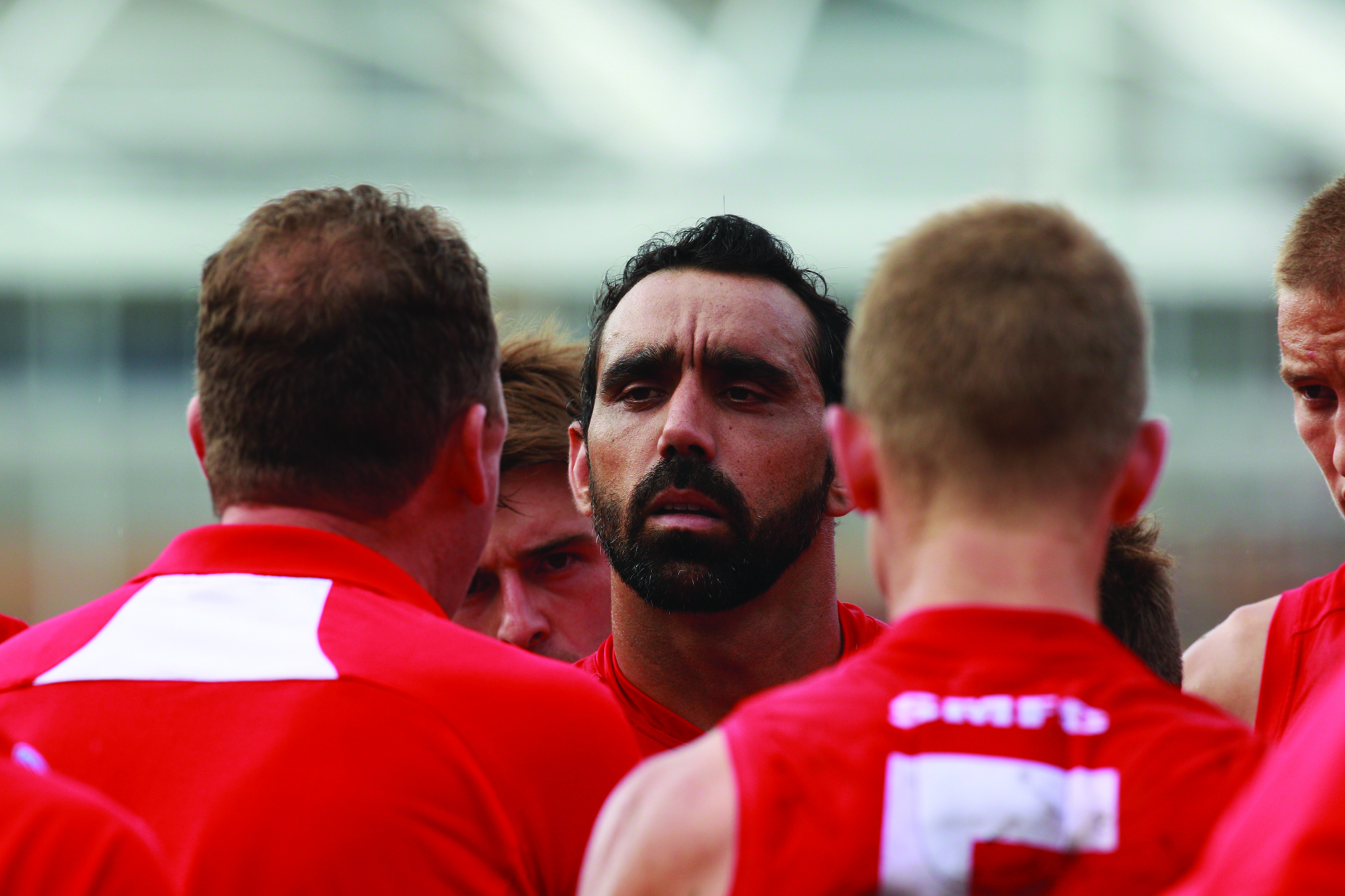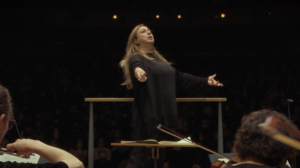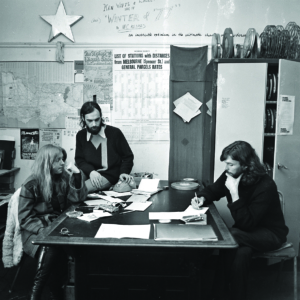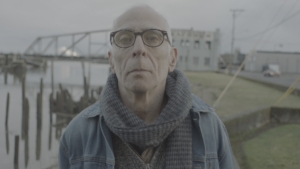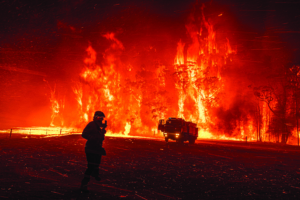The final act of the sporting career of Adnyamathanha and Narungga Australian Football League (AFL) player Adam Goodes served as a focal point for a … well, the polite term would be ‘discussion’ about racism – not just on the footy oval, but in Australian society and culture as a whole. The details are a matter of public record. During a game in the 2013 Indigenous Round, Goodes had security eject a thirteen-year-old spectator who had called him an ‘ape’, a term that has long been used as a racial slur. Following the incident, the Sydney Swans player became the subject of increasing vitriol from both game-day crowds and public commentators, including The Footy Show co-presenter Sam Newman and conservative 2GB radio broadcaster Alan Jones. After enduring a campaign of abuse that included being loudly and repeatedly booed at seemingly every game he played during the 2015 season, Goodes announced his retirement from football in September of that year.
The broader discourse around what is now generally referred to as the ‘booing controversy’ was prolonged and often heated, with pundits on both sides of the political divide ruminating on the meaning of it all. Was it racist? Was it even about race? Who gets to decide that it is? Did Goodes comport himself with dignity, or was he, as was averred by many of his critics, a poor sportsman who was performing for sympathy just as he (allegedly) performed for free kicks on the field?
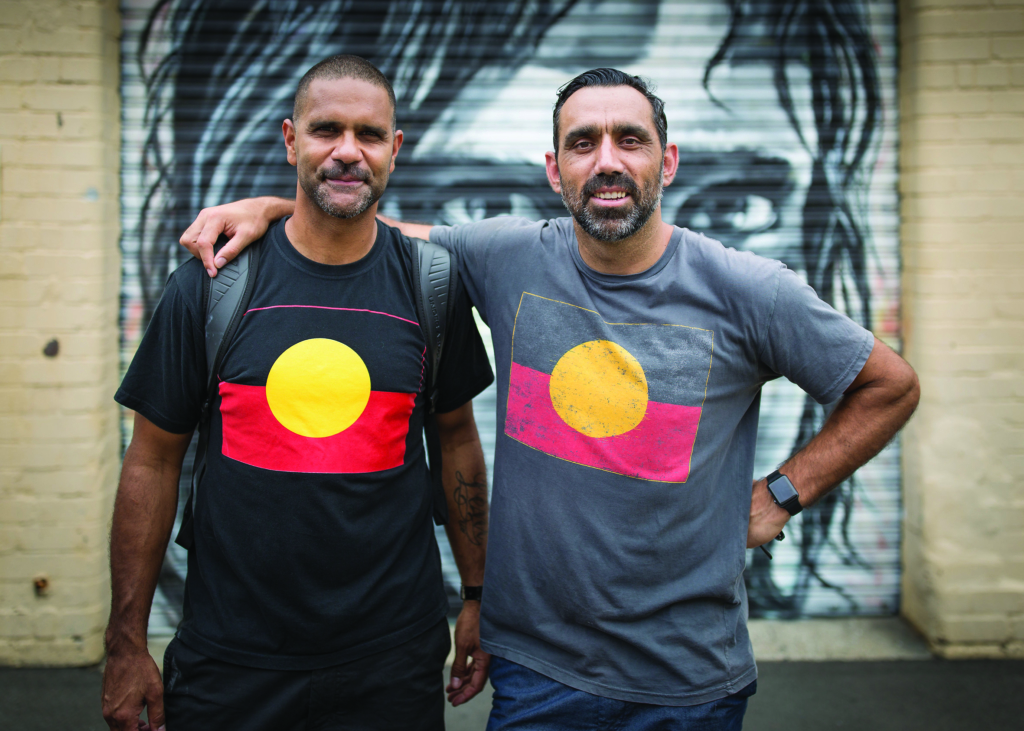
This rigmarole has proven fertile ground for factual filmmakers, with Goodes – thanks to his reputation as one of the most esteemed players of our national sport – serving as a lightning rod for uncomfortable contentions about race in modern Australia. And so 2019 saw the release of not one but two films on the subject: The Final Quarter, by veteran documentarian Ian Darling; and The Australian Dream, by prolific sports-documentary filmmaker Daniel Gordon. With both films ostensibly covering the same material, it’s tempting to consider them rivals for our attention – The Final Quarter as the Armageddon (Michael Bay, 1998) to The Australian Dream’s Deep Impact (Mimi Leder, 1998). In truth, however, each film comes at their mutual subject from a distinct angle and illuminates it from a different perspective. The result is a pair of films from two production teams that actually work in tandem, affording the engaged viewer a more complete and nuanced understanding of Goodes, his position in our society and what the events of his final years as a professional footballer can tell us about our attitudes to race, respect and success.
Premiering at the 2019 Sydney Film Festival in June, The Final Quarter lays out its thesis immediately, beginning with a title card that reads, ‘This film is about the final three years of Adam Goodes’ football career’ – a plain statement of fact that keys the viewer into assuming a certain level of objectivity in what is to follow. Darling – whose resume is studded with social-issues films, most notably 2008’s The Oasis (co-directed with Sascha Ettinger-Epstein), a look at homeless youth in Sydney – adopts a kind of bird’s-eye view of events, effectively asking the audience to make up their own minds about the rightness or wrongness of what has transpired. Using only contemporary footage and recordings (with one notable exception, which we’ll get to later), interspersed with title cards that provide context or bridge small gaps, and eschewing voiceover narration and talking-head interviews, The Final Quarter presents as a kind of historical procedural not too far removed from Ken Burns’ PBS documentaries. The authorial ‘voice’ is omniscient and dispassionate.
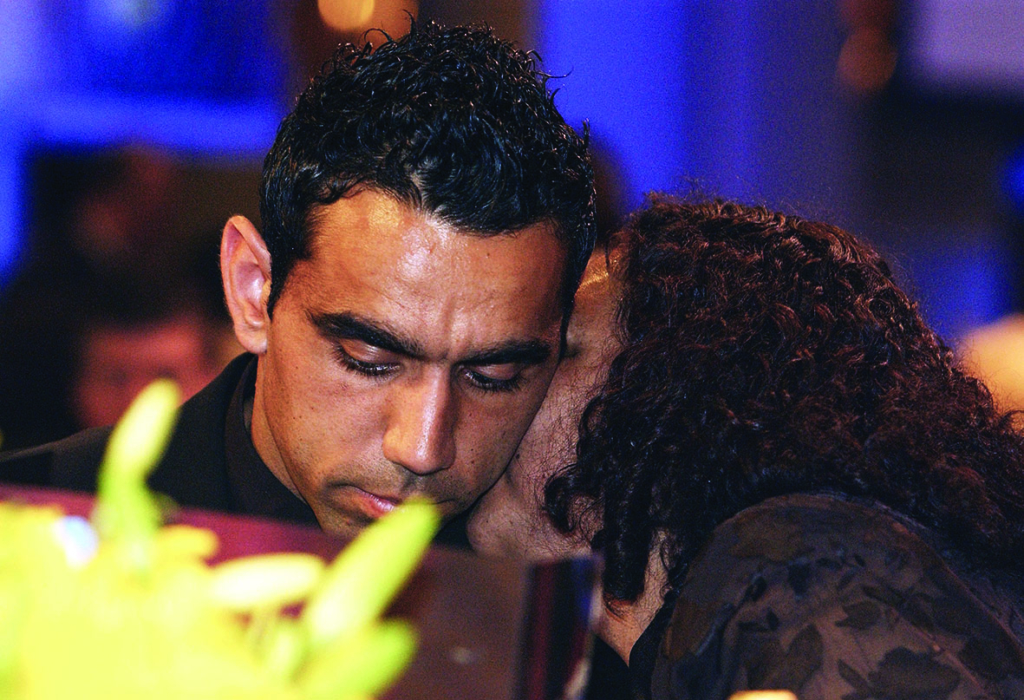
If The Last Quarter is bird’s-eye, then The Australian Dream, which debuted at the 2019 Melbourne International Film Festival in August, is (football) boots-on-the-ground, taking us inside the Goodes camp and, to some degree, inside Goodes’ head. Written by prominent Wiradjuri journalist Stan Grant, The Australian Dream was made with the cooperation of Goodes and his representatives, and grants us a far more intimate look at the harrowing personal cost that the tirades and criticisms had on the player. The film makes no pretence to objectivity, preferring instead to confront us with the emotional impact of the abuse to which Goodes was subjected. Whereas The Final Quarter invites viewers to consider for themselves whether, or to what extent, the booing and the seemingly endless commentary from conservative pundits were racist, The Australian Dream makes no bones about it, with Grant and Goodes himself explaining to-camera the racist basis of the verbal attacks and sharing their own, ongoing experiences of racism as high-profile, successful Indigenous men.
The Australian Dream was made with the cooperation of Goodes and his representatives, and … makes no pretence to objectivity, preferring instead to confront us with the emotional impact of the abuse to which Goodes was subjected.
Yet this ‘insider’ insight is also something of a weakness in the latter film’s construction. No matter how well-meaning, the appeals to emotion and the overt attempt to align our point of view with Goodes’ leave The Australian Dream open to accusations of emotional manipulation, contravening the preference for removed storytelling associated with traditional expository documentary.[1]See Bill Nichols, ‘The Expository Mode’, in Introduction to Documentary, Indiana University Press, Bloomington & Indianapolis, 2001, pp. 105–9. Playing for free kicks, indeed. But to harp on about that would be to miss the point of The Australian Dream, which is to deeply and unequivocally anchor what happened to Goodes in his Indigenous identity, and to confront the (presumably mostly white-settler) audience with the disingenuous nature of the excuses offered for his ongoing persecution. Every argument against or critique of Goodes’ protestations is, at best, a variant of ‘I’m not racist, but …’ And the notion that Goodes was booed because of his poor sportsmanship rather than his racial background is shot down by other former AFL players of Indigenous descent; Nicky Winmar, who famously lifted his guernsey to show his black skin to a hostile crowd, and Gilbert McAdam appear in Gordon’s film in order to disavow the often-repeated rebuttal that other Indigenous players have not suffered such racial abuse as Goodes copped. For its part, The Final Quarter simply cites statistics to illuminate the ‘playing for free kicks’ narrative, ultimately showing that Goodes, while not unequivocally innocent of the occasional play-acting, was certainly not as culpable as other players who received far less scorn.

But that’s the thing, isn’t it? These films are only about football inasmuch as that cultural framework is needed to pave the way for a conversation about race – an uncomfortable and ongoing conversation that a large number of participants thereof seem to believe is unnecessary, as their statements in each film indicate. While The Australian Dream actually allows Collingwood Football Club president Eddie McGuire and conservative commentator Andrew Bolt to expand on and defend their contemporaneous remarks (McGuire at least comes across as contrite), The Final Quarter is content to let Goodes’ critics effectively damn themselves with their own testimonies. It’s difficult to see Newman, his face twisted with derision as he angrily jabs a finger at the camera on The Footy Show while decrying Goodes’ behaviour as unsuitable for an Australian of the Year,[2]Goodes was conferred the honour in 2014; see ‘Honour Roll: 2010s’, Australian of the Year Awards website, <https://www.australianoftheyear.org.au/honour-roll/?view=fullView&recipientID=1144>, accessed 6 November 2019. as anything but an archetypal example of blinkered white masculinity. Similarly, Jones, whose remarks are spoken by an actor after he denied the film permission to use his broadcasts,[3]Myriam Robin, ‘Alan Jones Refused Clips to Goodes Doco’, The Australian Financial Review, 23 July 2019, <https://www.afr.com/rear-window/alan-jones-refused-clips-to-goodes-doco-20190722-p529hn>, accessed 6 November 2019. comes across as nostalgic for a more ‘egalitarian’ past that never existed, insisting that racism was completely absent when he was coaching rugby in the early 1980s (a claim refuted immediately by Mark, Glen and Gary Ella, brothers of Yuin and Dharawal descent who played under him at the time).
Perhaps the most impressive achievement of both films can be found in The Final Quarter … Thanks to the film’s archival approach, we effectively have an easily accessible resource as to what exactly was said, done, typed and tweeted, and the results are damning.
Perhaps the most impressive achievement of both films can be found in The Final Quarter: that of clarifying the discourse. Across Goodes’ various actions – from his calling-out of the racist remark to the Indigenous ‘war dance’ he performed during the 2015 Indigenous Round and beyond – the goalposts have repeatedly been shifted, and the waters, muddied. Goodes’ critics have said that he singled out and victimised his young heckler; that he was hostile to his critics; that the vitriol directed at him was not that bad, not motivated by race, not a big deal. Thanks to the film’s archival approach, we effectively have an easily accessible resource as to what exactly was said, done, typed and tweeted, and the results are damning. We have Goodes’ words on record, not to mention Bolt’s and Newman’s and McGuire’s, and we also have examples of the torrent of racist social-media abuse directed at the former AFL star. In this way, Darling’s film lets the facts speak for themselves.
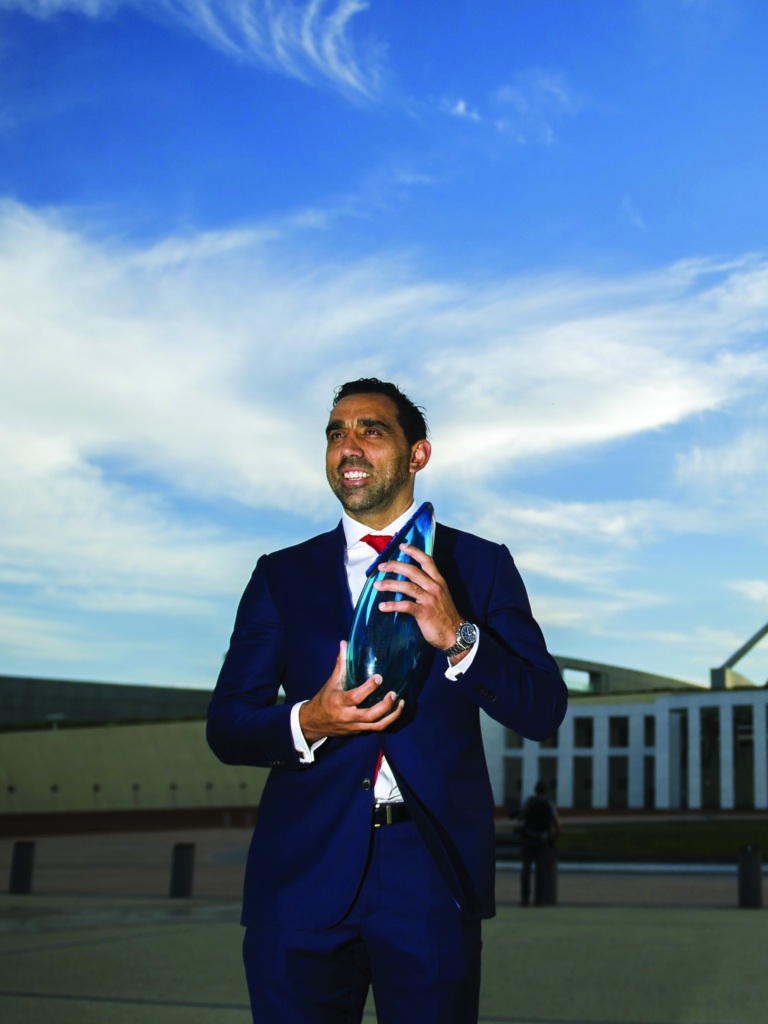
If The Australian Dream does not succeed so concisely and precisely at offering a snapshot of the events in question, it’s mainly because its aspirations are far grander. Grant and Gordon attempt to use the Goodes affair to sum up and contextualise the entire sweep of Australian racial discomfort and strife – or, at the very least, the relationship between white and Indigenous Australians. There’s a touch of the mythic to the film, which opens with an aerial shot of parched outback land and closes with poetic imagery of Indigenous kids playing footy. We travel with Goodes to his people’s country as he attempts to settle his mind, and we see him bury his bare feet in red earth. It’s powerful cinema, undoubtedly. But it’s also somewhat staged; while the drive to connect oval to outback, code to country, is both noble and ambitious, it comes at the expense of the straightforward, arguably more powerful truths yielded by The Final Quarter’s dispassionate documentation.
None of this, however, is intended to make a case for which film is ‘better’. Rather, this is a rare instance of two entirely separate works existing in a complementary relationship with each other, with The Final Quarter’s clarity of exposition being balanced and buoyed by The Australian Dream’s depth of feeling, and vice versa. On top of this, there are the films’ commonalities: their respective examinations of Australian racism, both personal and cultural, and of the way that racism exists, often invisible to the white majority, at every stratum of Australian society. Importantly, they both illustrate what these prejudices – too frequently unacknowledged, let alone directly addressed – cost us. In this case, at the bare minimum, one can suspect it would have been several more years of football from one of the game’s greats, a price used in each film as a stand-in for a wider and heavier loss.
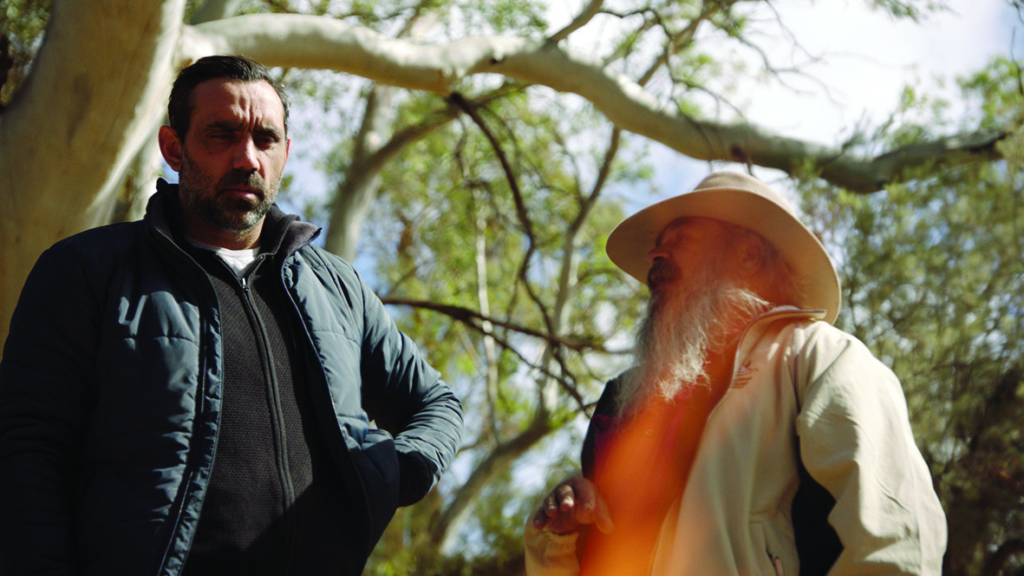
What’s under examination in both films is not the overt, brutal racism of the hurled epithet; such things are easily circumscribed and excluded. Instead, they both tackle, in their own ways, the far thornier and more difficult issue of casual, subtle racism of the stripe that allowed the campaign of abuse against Goodes to be a subject of debate rather than a target of censure. Both benefit from hindsight, of course – and, indeed, just before The Final Quarter premiered, the AFL and all eighteen of its clubs issued an apology for their failure to respond appropriately to the widespread vilification of Goodes at the time. A late and hollow gesture, perhaps, but their promise to ‘continue to fight all forms of racism and discrimination, on and off the field’,[4]Cited in Greg Baum, ‘AFL, Clubs Apologise to Goodes’, The Age, 7 June 2019, <https://www.theage.com.au/sport/afl/afl-clubs-apologise-to-goodes-20190607-p51vnh.html>, accessed 6 November 2019. raises the most important, if unspoken, question of both films: not what happened to the great Adam Goodes, but how Australia will respond when it almost inevitably happens again.
http://www.thefinalquarterfilm.com.au
http://www.australiandreamfilm.com
Endnotes
| 1 | See Bill Nichols, ‘The Expository Mode’, in Introduction to Documentary, Indiana University Press, Bloomington & Indianapolis, 2001, pp. 105–9. |
|---|---|
| 2 | Goodes was conferred the honour in 2014; see ‘Honour Roll: 2010s’, Australian of the Year Awards website, <https://www.australianoftheyear.org.au/honour-roll/?view=fullView&recipientID=1144>, accessed 6 November 2019. |
| 3 | Myriam Robin, ‘Alan Jones Refused Clips to Goodes Doco’, The Australian Financial Review, 23 July 2019, <https://www.afr.com/rear-window/alan-jones-refused-clips-to-goodes-doco-20190722-p529hn>, accessed 6 November 2019. |
| 4 | Cited in Greg Baum, ‘AFL, Clubs Apologise to Goodes’, The Age, 7 June 2019, <https://www.theage.com.au/sport/afl/afl-clubs-apologise-to-goodes-20190607-p51vnh.html>, accessed 6 November 2019. |
